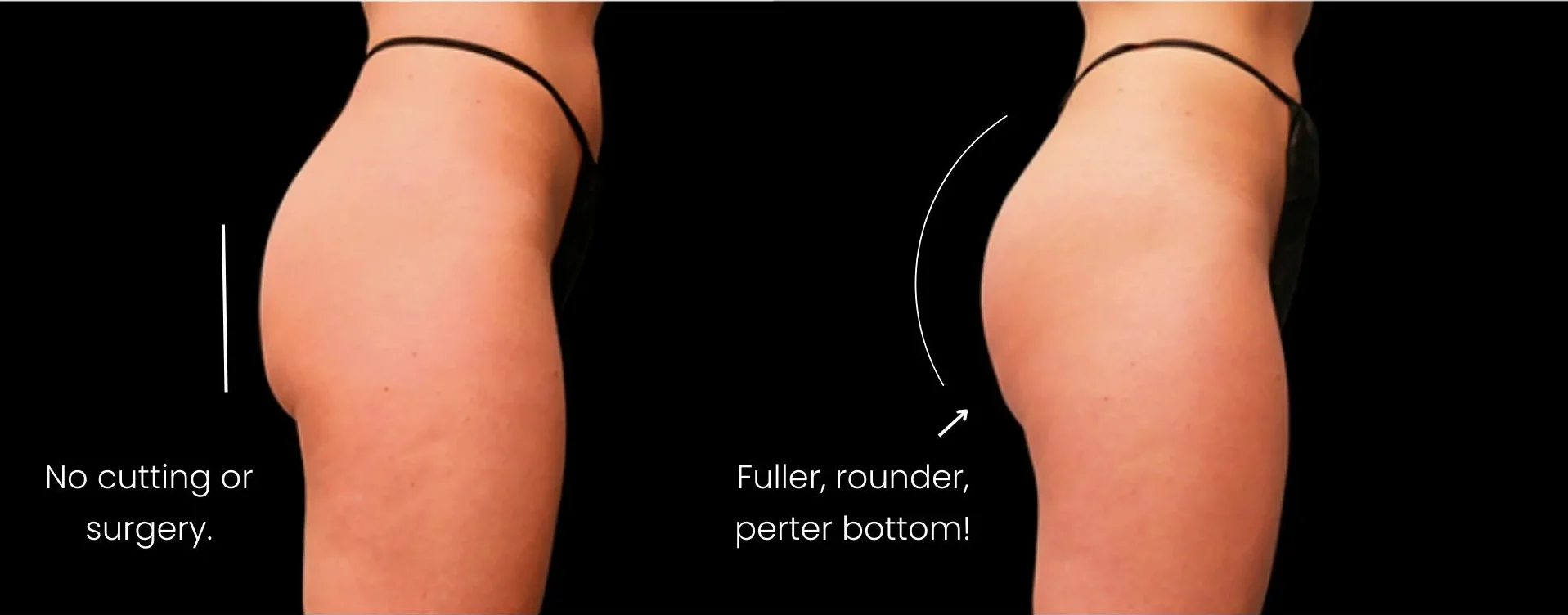
It adds volume without surgery—but not always where you want it
Non-surgical butt augmentation uses fillers or collagen stimulators to create subtle volume. There are no cuts. No implants. No general anesthesia. That’s the draw. You walk in, get injected, walk out. The shape changes the same day.
But the volume isn’t always precise. Some areas swell more. Some absorb faster. The result isn’t sculpted—it’s suggested. For some, that’s enough. For others, it feels incomplete. It’s not as predictable as fat grafting or implants.
What you avoid in risk, you trade for control. What you gain in convenience, you may lose in longevity or precision.
Results are reversible—but not always
Hyaluronic acid fillers can be dissolved. If you don’t like the look. If there’s an issue. If something shifts. The reversal is quick, usually with one enzyme injection. That safety net matters to many people.
But not all fillers dissolve. Sculptra, for example, builds collagen. You can’t reverse your body’s own response. Once tissue grows, it fades naturally—but only over time. Months. Sometimes more. In some cases, the firmness remains even when the shape fades.
Knowing what’s in your body means knowing what you can undo—and what you must wait out. It’s not fear—it’s informed choice.
Downtime is short—but limits still exist
Most people return to daily life the same day. But that doesn’t mean zero recovery. You’ll be told not to sit too much. Not to lie flat. Not to stretch aggressively. You might wear compression for a few days.
The area may swell. Bruise. Feel tender. These are minor. But real. You’ll walk differently. Sit differently. Sleep differently—for a little while. And some report asymmetry at first, until swelling balances out.
No downtime doesn’t mean no adjustment. There’s still care involved—even if no one else sees it.
The cost is lower than surgery—but it adds up
One session of fillers costs less than surgery. That’s true. But one session rarely gives final results. You’ll need more than one. Maybe three. Maybe four. And once it fades, you’ll need maintenance.
Over years, the total may match surgery—or exceed it. The difference is in how it’s spread out. Smaller payments. Spaced over time. Less commitment. But ongoing.
It feels less intense. But it lasts less, too. Cost isn’t just what you pay—it’s how often you pay it.
Risks are lower—but not gone
You don’t go under anesthesia. That removes a major surgical risk. But injections carry their own concerns. Vascular compromise. Asymmetry. Filler migration. Infection.
Rare—but possible. Especially with unlicensed providers. Especially with black market products. Especially when patients seek shortcuts. Especially when price becomes more important than skill.
Safer doesn’t mean safe anywhere. It means safe when done by someone who understands the anatomy. And respects it.
The look is softer—not sculpted
Fillers add curve. Softness. Subtle roundness. They don’t lift the tissue. They don’t remove sag. They can’t fix loose skin. They don’t shape muscle. They don’t recontour hips or waist.
If your goal is dramatic projection or firm structure, non-surgical options may fall short. But for those wanting gentle contouring—without the commitment—it fits. For dresses. For confidence. For light reshaping.
It’s not transformation. It’s refinement. It’s not new shape—it’s enhanced silhouette.
It fits certain bodies more than others
Non-surgical butt lifts work best on leaner patients. With tight skin. With minimal sag. With realistic goals. If your tissue is firm and your skin responsive, fillers integrate better and hold longer.
In heavier tissue, the filler may spread. In looser skin, it may disappear. That’s not failure—it’s mismatch. Knowing your anatomy helps match your expectations. And good providers say no when the answer is no.
The result depends more on what you start with than what you add.
Maintenance is both a benefit and a burden
Some see it as flexibility. You’re not locked into one look. You can adjust. Shape. Add. Subtract. That’s freedom. You don’t commit to a body that no longer feels like yours in five years. You get to shift with time.
Others see it as tiring. More appointments. More expense. No final destination. Just ongoing care. New filler when old fades. New shape when old softens. A loop. A lifestyle.
Neither view is wrong. It depends on how you want your body to change—and for how long.
It’s non-surgical—but not non-invasive
Needles enter the skin. Product fills deep layers. Bruising, discomfort, and swelling are possible. No scalpel doesn’t mean no contact. You may still need aftercare. Still need ice. Still need time.
It’s less invasive than surgery—but not passive. Your body still works to heal. Still adjusts to what’s added. Still decides what to keep and what to break down.
The beauty of non-surgical treatment isn’t in doing nothing—it’s in recovering faster and with fewer scars.
Patient education matters more than promotion
Social media shows highlights. Angles. Before-and-afters. But it doesn’t show fading. Maintenance. The weeks of swelling. The temporary shape shifts.
You have to know what’s real. What’s likely. What’s durable. A good provider spends more time managing your expectations than injecting your skin. That conversation matters more than the filler itself.
Because when you know what to expect, you’re rarely disappointed—even if the result is subtle.
